The 22-year-old Brown has played in five games with the Coyotes this season, recording 17 PIM. He has also collected four goals and 8 assists with 31 PIM and a plus-nine rating in 15 games with the Pirates.

The 22-year-old Brown has played in five games with the Coyotes this season, recording 17 PIM. He has also collected four goals and 8 assists with 31 PIM and a plus-nine rating in 15 games with the Pirates.

Well that didn't last long. Klesla was put on waivers and sent to Portland earlier this week, but he is already back with the big club. The 31-year-old Klesla has recorded one goal and two assists with 10 penalty minutes (PIM) in 15 games with the Coyotes this season.
Ashton has appeared in 13 games with Toronto this season. He has averaged 7:56 TOI while recording one assist and 12 penalty minutes.
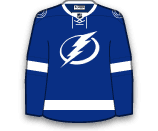
Reinhart takes Galiardi's roster spot. He has 12 points in 19 games with the AHL Heat this season.

Zucker is not expected to have any fantasy significance.

Smith-Pelly registered one goal and seven assists in 16 games while he was with the Ducks. He had been a healthy scratch for two of the last three games, so he's assignment is not as surprising as Emerson Etem's.

Etem played in 24 of 27 games with the Ducks this season tallying six goals and four assists with a plus-2 rating. The Ducks did not give a reason as to why Etem is being sent down, but he will report to Norfolk along with Devante Smith-Pelly.

Tyrell, 24, has skated in 16 games this season with the Crunch, posting three goals and four points to go along with eight penalty minutes. Tyrell, 24, has skated in 16 games this season with the Crunch, posting three goals and four points to go along with eight penalty minutes. Last season Tyrell recorded a goal and four points in 21 games with the Lightning.
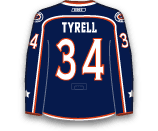
Conner has not recorded a point in two games with Pittsburgh this season. in 15 games in the AHL he has six goals and 11 points in 15 games.

After playing 33 games with the Penguins last season, Despres has not appeared in a game with them this season. In 17 games games with Wilkes-Barre/Scranton, he has three goals and 11 points. Paul Martin landed on IR today, so Despres could be in the lineup tonight. Head coach Dan Bylsma will have to decide between Despres or Robert Bortuzzo.

Megna has appeared in six games with the Penguins this season, recording two goals and one assist. With Beau Bennett out for two months and Matt D'Agostini on waivers, Megna could be up to stay for a long period of time.
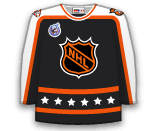
Strachan appeared in five games with the Capitals before being re-assigned on Monday. He is back and could be in the lineup tonight vs. Ottawa. He was skating with Nate Schmidt at this morning's skate, suggesting he is in and Steve Oleksy is out. In five games Strachan had no points and a minus-2 rating.

Morin recorded three assists in nine games, including one yesterday vs. Edmonton. He returns to Rockford where he has six goals and 11 points in 10 games.
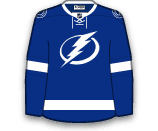
Miller was a healthy scratch in the last four Rangers contests. He has struggled this season with just one goal and one assist in 15 games. His return to the AHL likely means that Taylor Pyatt is nearing a return.

Korobov did not record a point in his NHL debut. He returns to the AHL where he has six assists in 15 games.

Gibbons played in five games with Pittsburgh, scoring his first NHL goal and adding an assist for two points in a 3-1 defeat of the Anaheim Ducks on November 18. He returns to the AHL where he has seven goals and 22 points in 15 games.
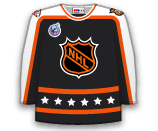
Kucherov, 20, was the 58th overall pick in 2011 NHL Entry Draft. The Russian winger has tore up the AHL this season recording 13 goals and 11 assists (24 points) in 17 games. He will debut on a line with Alex Kilorn and Teddy Purcell.

Merrill suffered a concussion in the first period of his NHL debut on November 3. Merrill is expected to dress tonight with Adam Larsson out after crashing into the board on Saturday. Merrill has two goals and eight points in 14 games with the Albany.

Orlov has yet to dress for the Caps this season but has three goals and nine points in 10 games with Hershey. He will likely make his season debut on Wednesday vs. Ottawa.

Strachan failed to record a point while averaging 17:44 TOI in five games with the Capitals. The Capitals have recalled Dmitry Orlov to fill his spot.
